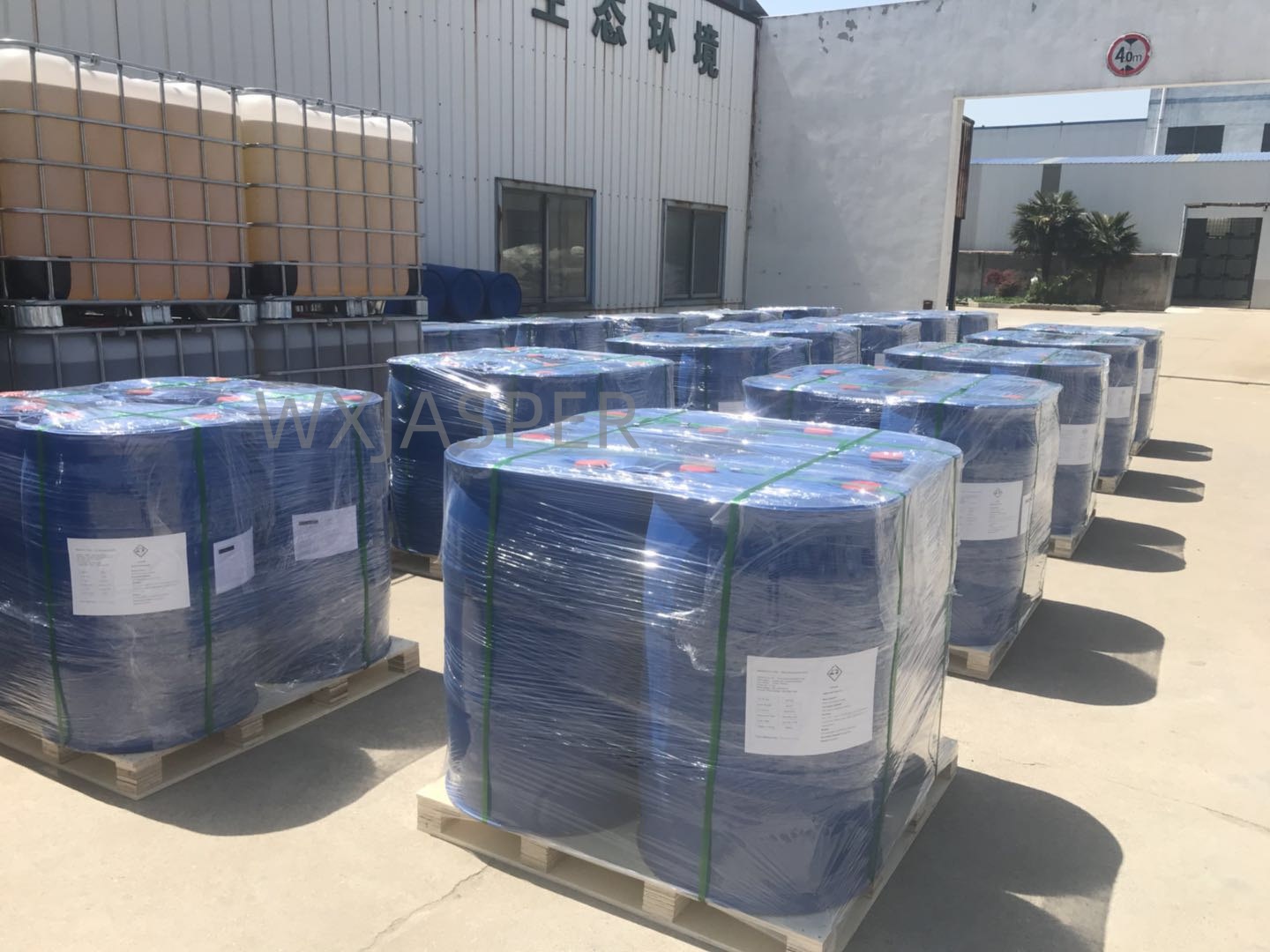Your Location:Home > Products > Solvents > Vinyl Terminated Silicone Fluid



CasNo: 68083-18-1
MF: C13H30O3Si4
Appearance: liquid
Delivery Time: 15 days
Packing: 200kg/drum
Purity: 99%
| Item | Details |
|---|---|
| Chinese Name | 乙烯基硅油;乙烯基封端聚二甲基硅氧烷;端乙烯基聚二甲基硅氧烷 |
| English Name | Vinyl Silicone Oil; Vinyl-Terminated Polydimethylsiloxane (V-PDMS) |
| CAS Number | 68083-19-2 (general vinyl-terminated grade) |
| Chemical Formula | - Vinyl-terminated type: H2C=CH−Si(CH3)2−O−[(CH3)2SiO]n−Si(CH3)2−CH=CH2 - Vinyl-side-chain type: Contains partial (CH2=CH)(CH3)SiO segments |
| Molecular Weight | Varies with polymerization degree n (corresponding to viscosity range; typically 1,000–100,000 g/mol) |
| Key Structural Feature | A main chain of Si-O-Si with methyl groups (−CH3) as the primary side groups. The defining characteristic is the introduction of vinyl groups at the molecular chain ends or side chains—vinyl groups serve as active sites for crosslinking reactions, while the polymerization degree n determines the base viscosity and mechanical properties. |
The physical properties of vinyl silicone oil are primarily determined by its viscosity (polymerization degree n) and vinyl content, with different specifications tailored to specific application scenarios:
| Physical Parameter | Typical Range (Vinyl-Terminated Type) |
|---|---|
| Appearance | Colorless, transparent liquid (no turbidity, sediment, or yellowing; visual clarity directly reflects purity—impurities cause turbidity or discoloration). |
| Viscosity (25°C, cSt) | 50–100,000 (common specifications: 100, 500, 1,000, 5,000, 10,000 cSt; low viscosity for low-hardness silicone, high viscosity for enhanced product strength). |
| Density (25°C, g/mL) | 0.960–0.980 (slightly less dense than water; increases slightly with viscosity, enabling uniform mixing with crosslinkers and catalysts). |
| Refractive Index (n₂₀/D) | 1.400–1.410 (a stable optical parameter for rapid quality inspection; deviations >0.002 usually indicate impurities or abnormal vinyl content). |
| Flash Point (Closed Cup, °C) | ≥180°C (medium-to-high viscosity grades, e.g., ≥5,000 cSt); ~150°C for low-viscosity grades (e.g., 100 cSt) (fire precautions required). |
| Freezing Point (°C) | -50 to -60°C (excellent low-temperature fluidity; no heating required for winter storage or low-temperature processing, avoiding production delays due to solidification). |
| Vinyl Content (mol%) | 0.1–2.0% (vinyl-terminated type: lower viscosity = higher content, e.g., ~1.5–2.0% for 100 cSt, ~0.1–0.3% for 10,000 cSt; vinyl-side-chain type adjustable on demand). |
| Solubility | Insoluble in water, methanol, and ethanol; fully miscible with dimethyl silicone oil, toluene, xylene, ethyl acetate, and silicone intermediates (e.g., HMDSO, DVTMDSO), supporting flexible formulation design. |
The core characteristic is a balance of "inert main chain + reactive vinyl groups," ensuring storage stability while meeting crosslinking requirements:
Reactivity of Vinyl Groups
Vinyl groups are the core functional groups. Under the action of platinum catalysts (e.g., chloroplatinic acid, platinum-vinyl siloxane complexes), they undergo hydrosilylation reactions with crosslinkers containing Si-H bonds (e.g., hydrogen-containing silicone oil), forming a three-dimensional crosslinked network. This is the core curing mechanism for addition-cure silicone rubber/silicone, with no by-products (unlike condensation-cure silicone, which releases small molecules), resulting in bubble-free products and low shrinkage (<0.1%).
Excellent Thermal Stability
The bond energy of the Si-O-Si main chain is as high as 452 kJ/mol (far higher than the 347 kJ/mol of C-C bonds). Uncured vinyl silicone oil remains stable at -60–200°C for long periods; after curing (crosslinked into an elastomer), the continuous service temperature increases to 200–250°C, with short-term heat resistance up to 300°C and low thermal weight loss (<1% weight loss at 200°C for 24 hours).
Chemical Inertness
Except for the crosslinking reaction of vinyl groups, the methyl groups and Si-O-Si main chain in the molecular structure are inert to weak acids, weak bases, salt solutions, and most organic solvents (e.g., petroleum ether, acetone), without hydrolysis, oxidation, or degradation. This ensures the stability of products in harsh environments (e.g., humidity, chemical corrosion).
Storage Stability
When stored in a sealed, light-protected, and room-temperature (0–30°C) environment, vinyl silicone oil without added catalyst can be stably stored for 12–24 months, with no stratification, viscosity changes, or vinyl degradation. Mixing with acidic/alkaline impurities or exposure to high-temperature sunlight may cause slight siloxane chain scission, so strict storage conditions must be maintained.
Based on the stringency of downstream applications (e.g., general industry, medical care, electronics), vinyl silicone oil is classified into multiple quality grades, with key parameter differences as follows:
| Quality Grade | Industrial Grade (General Silicone Rubber) | High-End Grade (Liquid Silicone Rubber/Coatings) | Medical Grade (Implant/Contact Products) |
|---|---|---|---|
| Purity (GC, Main Content) | ≥99.0% | ≥99.5% | ≥99.8% |
| Vinyl Content Deviation | ±0.1% | ±0.05% | ±0.03% |
| Moisture Content | ≤300 ppm | ≤100 ppm | ≤50 ppm |
| Metal Impurities (Fe/Cu/Na) | ≤10 ppm (total) | ≤1 ppm (total) | ≤1 ppb (per element) |
| Volatile Content (150°C, 2h) | ≤0.5% | ≤0.3% | ≤0.1% |
| Light Transmittance (400 nm) | ≥85% | ≥90% | ≥95% |
| Key Compliance | No special requirements | RoHS 2.0 Compliant | USP Class VI, FDA 21 CFR §177.2600 Compliant |
Note: Medical-grade products require additional biocompatibility testing (e.g., cytotoxicity, sensitization), while electronic-grade products require ion content control (Cl⁻/Na⁺ ≤1 ppm).
As the "backbone raw material" for addition-cure silicone materials, vinyl silicone oil is widely used in high-end manufacturing, medical care, electronics, and other fields: